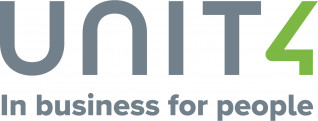Resolving workplace conflict is an expected part of the job managers and Human Resource Practitioners. Whether you work in education, healthcare, human services, business, or any field, you might deal with angry, hostile, or noncompliant behaviour every day. Your response to the defensive reaction is often the key to avoiding a physical confrontation with someone who has lost control of their behaviour.
These ten De-Escalation Tips will help you respond to challenging behaviour in the safest, most efficient way possible.
- Be empathetic and non-judgmental
- Respect personal space
- Use non-threatening nonverbal communication
- Avoid overacting
- Focus on feelings
- Ignore challenging questions
- Set limits
- Choose wisely what you insist upon
- Allow silence for reflection
- Allow time for decisions
To help you towards more efficient conflict de-escalation and resolution, the following basic steps can be followed:
- Obtain the name of the person with whom you are speaking: People respond favourably to their own name. It also makes the conversation more personal. Ask for the person’s name early in the piece and use it throughout the discussion.
- Use Active Listening: Clarifying, paraphrasing and using open-ended questions ensure that the individual you are speaking with knows you are aware of their situation and frustrations. Resaying a person’s own words back to them demonstrates that you have understood entirely what they were trying to say.
- Show support and suspend judgement: Empathy needs to be shown during conflict situations. Respecting the other person’s point of view even if you do not agree entirely will be the first step to resolving the conflict.
- Get them to agree and say yes: Having the person agree with you on general factual points leads the conversation towards a more favourable outcome. If you can show that you have understood their point of view by making clarifying statements you generate a state where the other person must reply with an affirmative response. The sooner you can get the person to say yes then sooner the conflict will de-escalate. It always works.
- Avoid clichés: The worst of these being “Calm Down”. Did you ever notice how people who tell you to calm down are the ones who got you mad in the first place? Saying those words during a verbal conflict usually gets the classic retort “I AM CALM” very loudly usually with an animated hand gestures as well.
- Show empathy: You need to show compassion and understanding and give the conflict your full attention. Do not make impulsive decisions. Take the time to work through the problem.
- Consistency in Courtesy: The person you are dealing with first thing in the morning deserves the same level of respect, civility and patience as the individual you are dealing with at 2 in the afternoon. They warrant the same high level of service and professionalism as the first person you spoke to. You need to maintain that position of positive brand ambassador and an excellent professional service.
There are many physical aspects of being mindful of in conflict situations. It is important always to be aware of features of conflict such as your body language, your emotions, your judgement, and your initial thoughts. Keeping these in mind is essential when trying to de-escalate a problematic situation.
Monika B. Jensen is the principal of the Aviary Group, consulting company that address workplace discord. For more information, visit www.aviarygroup.ca









